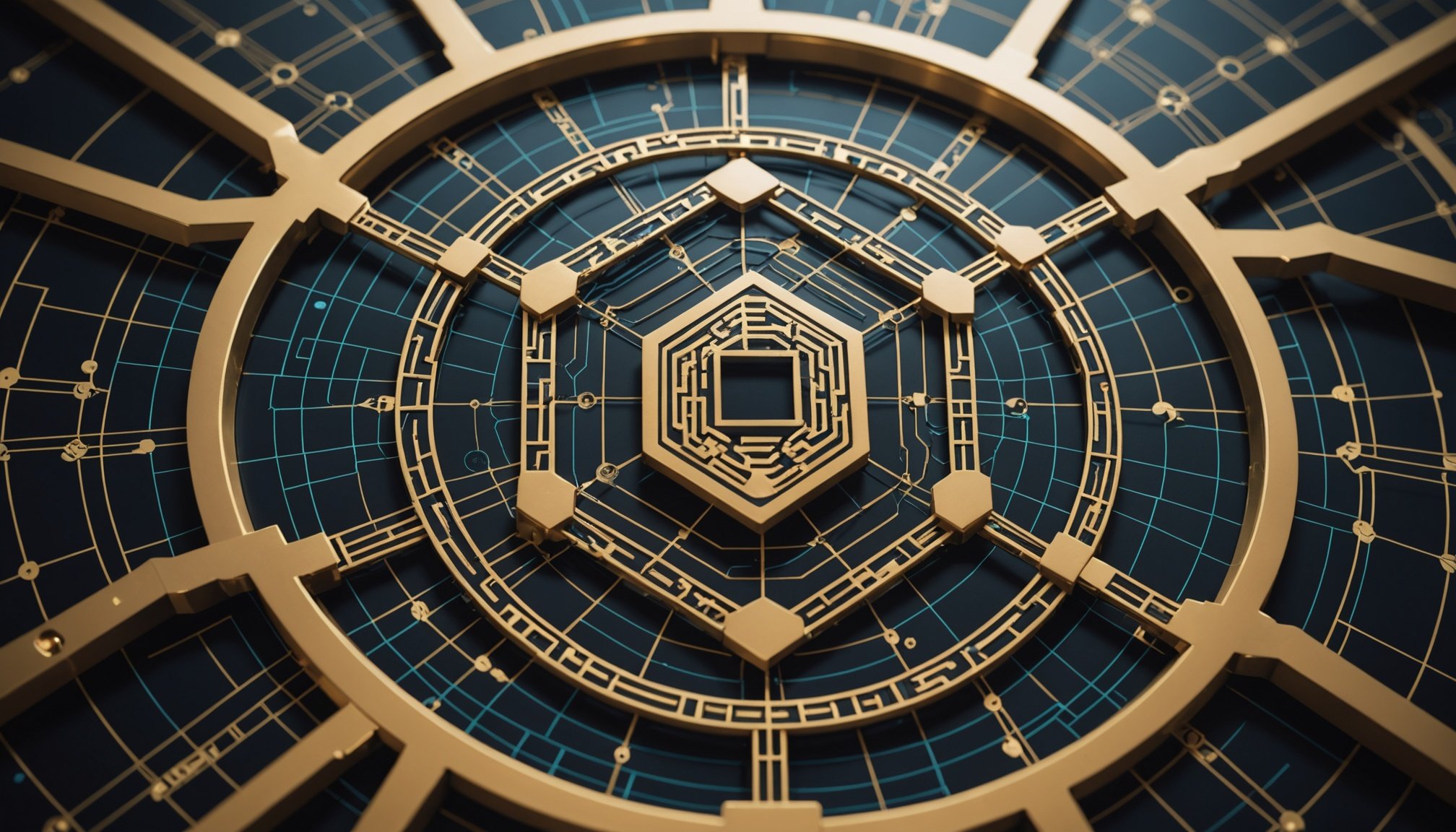Blockchain Security Features Relevant to DAOs
Blockchain technology is renowned for its security features that are crucial to the functioning of Decentralized Autonomous Organizations (DAOs). At the heart of blockchain security are smart contracts, which are programmed to automatically enforce organizational rules without human intervention. These contracts operate on blockchain platforms, ensuring transparency and reducing the risk of tampering.
One of the primary DAO protection mechanisms is its immutable nature. Once data is entered into the blockchain, it becomes nearly impossible to alter or delete. This immutability safeguards the integrity of records and operations within a DAO. Additionally, the use of encryption in blockchain technology ensures that data remains confidential and is only accessible to authorized parties.
Have you seen this : Enhancing cyber resilience: leveraging ai to strengthen security for vital infrastructure
Smart contract security is further enhanced by consensus mechanisms. These mechanisms require a majority of participants to agree on the validity of transactions before they are recorded. This consensus not only enhances trust among participants but also protects the network from attacks. In combination, these security features—encryption, consensus, and smart contracts—create a robust foundation for DAOs, ensuring they operate securely and efficiently.
Vulnerabilities and Threats to DAOs
Understanding DAO vulnerabilities is crucial to bolster security and manage risks effectively. Common vulnerabilities that plague DAOs often revolve around smart contracts, which are the backbone of these organizations. Since smart contracts execute transactions automatically, any oversight in code can lead to disastrous consequences. For instance, a poorly coded contract may be exploited by hackers to drain funds.
This might interest you : Revolutionizing safety: how deep learning elevates the precision of facial recognition technology
Potential threats to DAOs are not limited to coding errors. External attacks targeting smart contracts are becoming increasingly sophisticated. A notable example is the infamous attack on The DAO in 2016, where an attacker exploited a recursive calling vulnerability, siphoning off approximately $60 million worth of Ether. This incident underscores the need for rigorous auditing and security checks.
DAOs also face security risks related to governance models and decision-making processes. For example, the majority rule in some DAOs can be manipulated through token majority holdings, risking the centralization of power.
Examining these threats reveals that DAOs must adopt a multifaceted approach to security. Regular audits, diversified governance models, and real-time monitoring of smart contracts can help mitigate these security risks. As DAOs evolve, so too must their defense mechanisms against these myriad threats.
Protecting DAOs with Blockchain Technology
Implementing DAO protection strategies is crucial in a landscape where digital assets are vulnerable. One foundational measure is utilizing multi-signature wallets, a digital asset safeguard requiring multiple approvals before executing transactions. This layer of security ensures that funds are not moved without consensus, reducing risks from single-point failures or unauthorized access. Such wallets are pivotal in securing DAOs, preventing security breaches, and promoting trust among stakeholders.
Moreover, the implementation of decentralized oracles is integral to maintaining data integrity and accuracy. These oracles provide secure, tamper-proof data from the real world to the blockchain, driving informed decision-making within DAOs. By distributing trust across multiple nodes, decentralized oracles mitigate the risk of false data injections that could compromise DAO operations.
Lastly, scheduling regular code audits is a non-negotiable security best practice. These audits scrutinize code for vulnerabilities, ensuring robustness against potential exploits. By identifying and rectifying issues early, DAOs strengthen their security posture and maintain operational integrity. Comprehensive audits act as a proactive defense measure against evolving threats, securing the DAO ecosystem.
Case Studies of Successful DAO Protection
Examining prominent DAO case studies reveals insightful security success stories worth exploring. A notable example is the MakerDAO, which has successfully implemented robust security measures to protect its assets. MakerDAO uses multiple layers of protection, including smart contract audits, governance voting, and active community oversight. These mechanisms ensure its continued stability in a decentralized environment.
Similarly, Compound, a popular decentralized finance (DeFi) protocol, stands as another security success story. It has developed an in-depth risk assessment framework, which includes extensive peer reviews and thorough third-party audits of its code. These efforts serve to identify potential vulnerabilities and ensure the protection of users’ funds.
Learning from these protection implementation examples, it becomes clear that the adoption of comprehensive security strategies is crucial. A comparative analysis shows that successful DAOs, unlike their failed counterparts, are proactive in addressing security through transparent processes and community collaboration. Failed DAOs often lacked sufficient checks, leading to vulnerabilities that were eventually exploited.
From these security success stories, it’s evident that a multi-tiered approach—encompassing technological audits, community involvement, and governance structures—is integral for effective protection. Adopting these strategies can significantly increase a DAO’s resilience against potential breaches and ensure ongoing success.
Comparing DAO Security Measures to Traditional Organizations
In examining security strategies between DAOs (Decentralized Autonomous Organizations) and traditional organizations, key differences emerge. Traditional organizations often adopt a centralized security posture, dependent on distinct control hierarchies. This setup emphasizes perimeter defenses, governed by fixed protocols and compliance frameworks. While effective in some scenarios, static security frameworks can become vulnerable to rapidly evolving threats.
Conversely, DAOs harness a decentralized security model, promoting a dynamic and participatory approach. This design inherently benefits from distributed decision-making, mitigating risk by eliminating single points of failure. Through collective consensus, DAOs can swiftly adapt to emerging threats, fostering a resilient environment.
Despite these advantages, challenges persist. The need for continuous DAO comparison highlights the requirement for rigorous smart contract auditing and emergent threat detection capabilities. Exploring hybrid models that merge DAO and traditional concepts offers promising solutions. By integrating decentralized flexibility with conventional security oversight, these models can achieve robust, adaptable protection.
In this evolving landscape, embracing a blend of strategies can enhance organizational security, balancing the strengths of both decentralized autonomy and traditional controls. This synergistic approach fortifies defenses, ensuring readiness against contemporary and unforeseen challenges.






